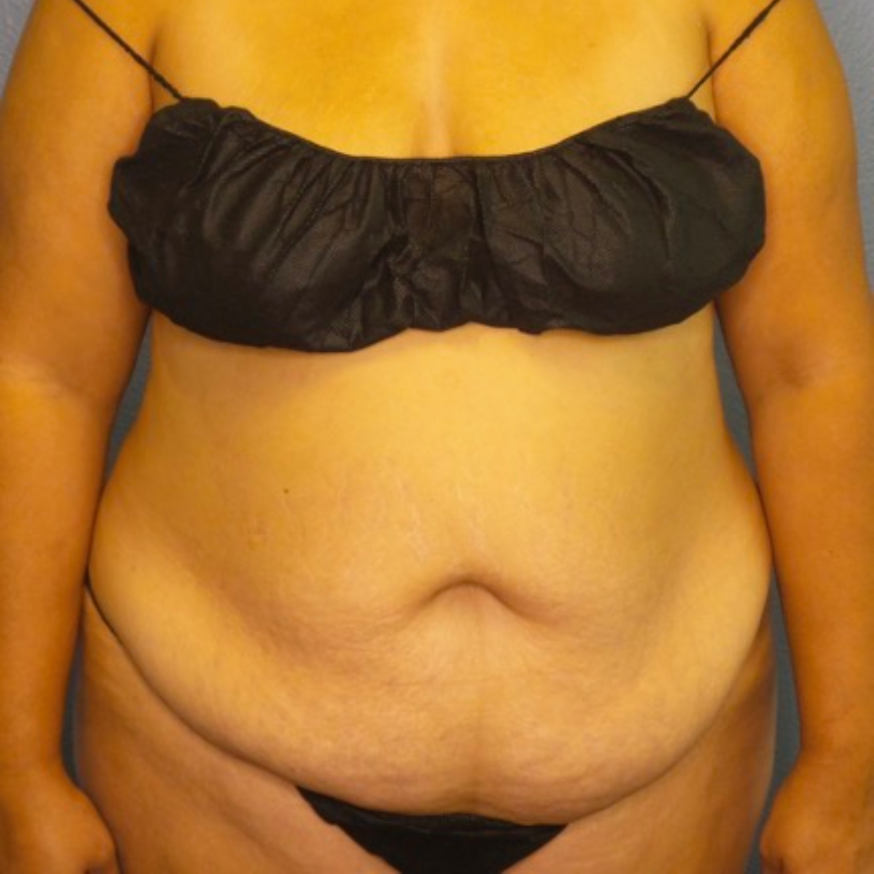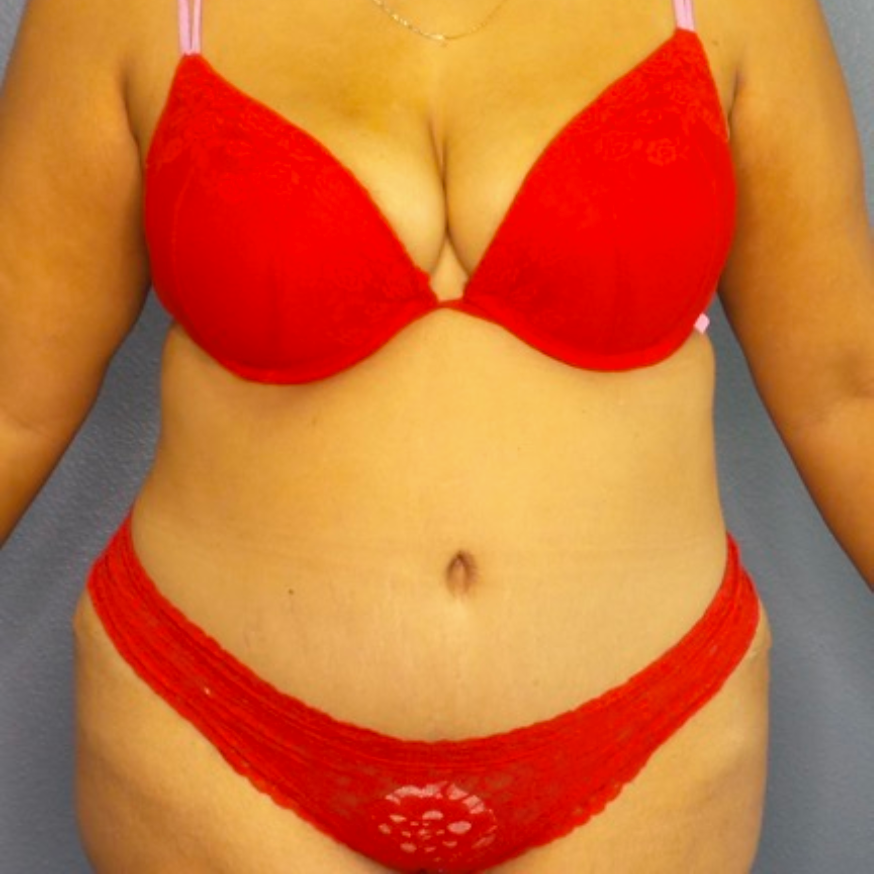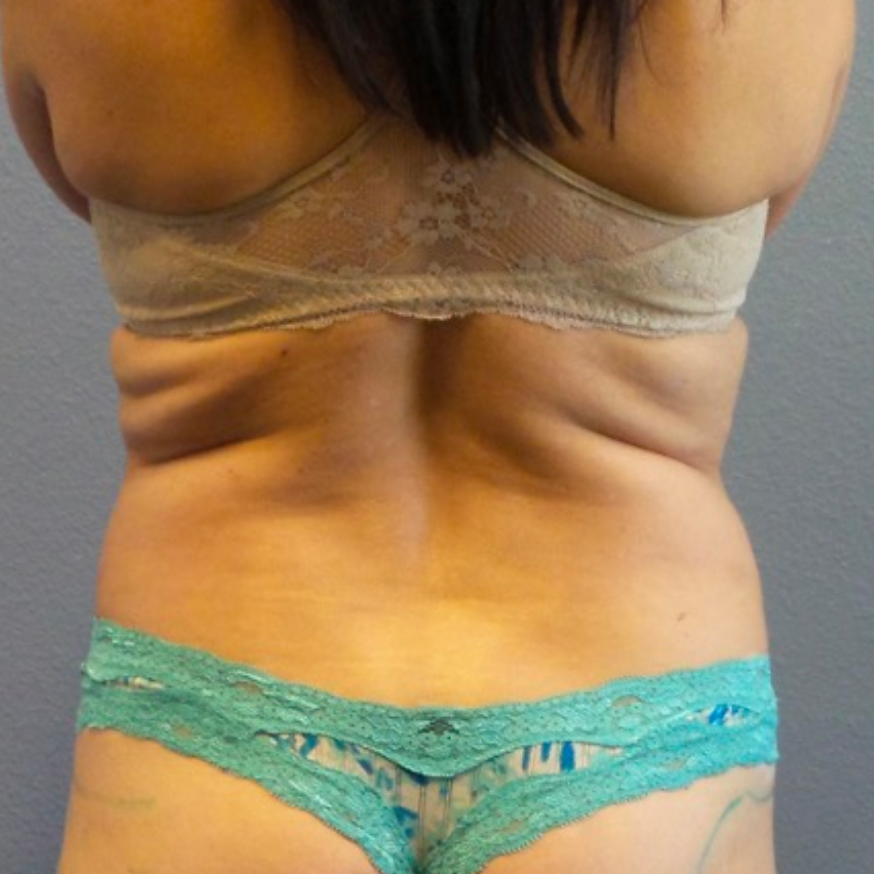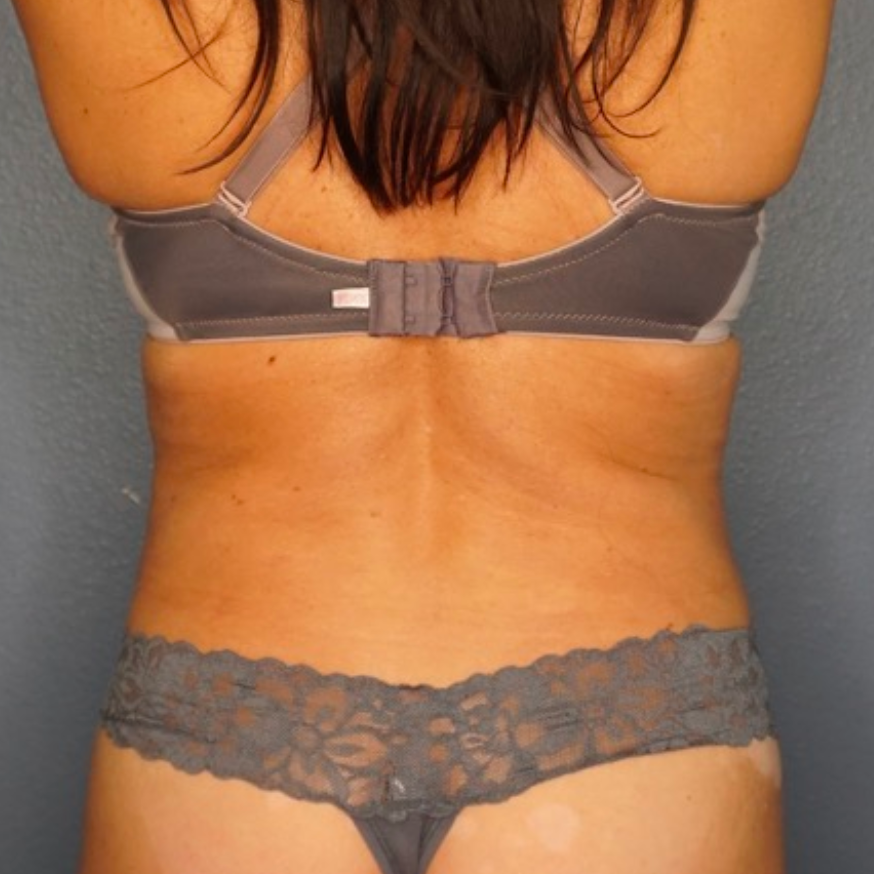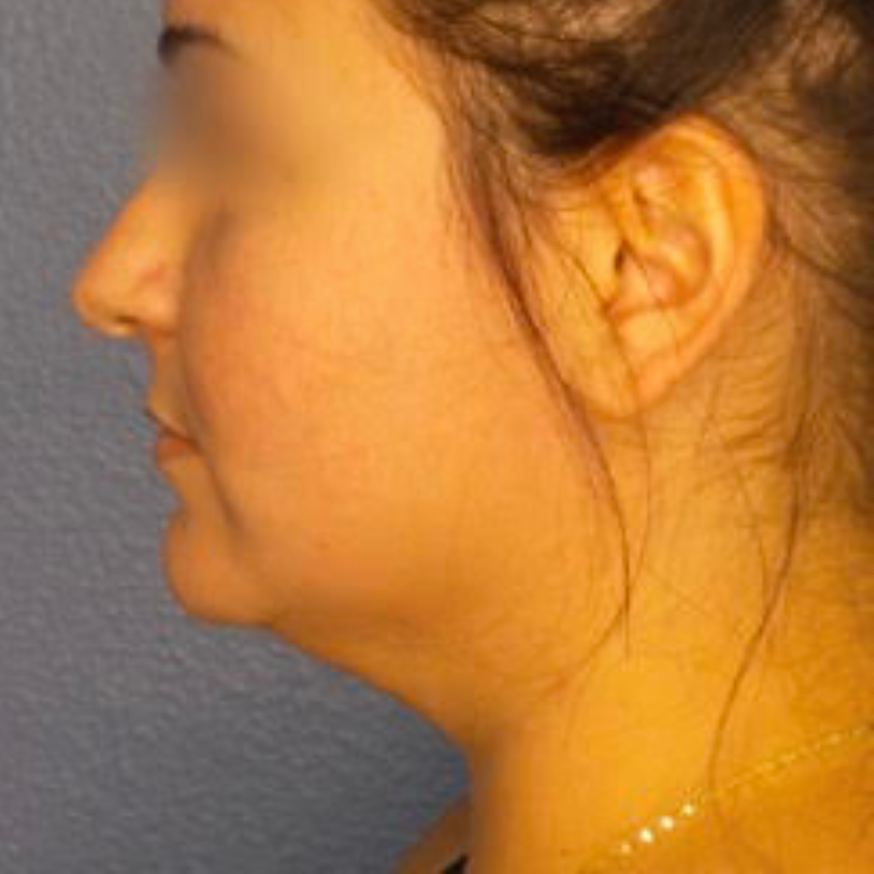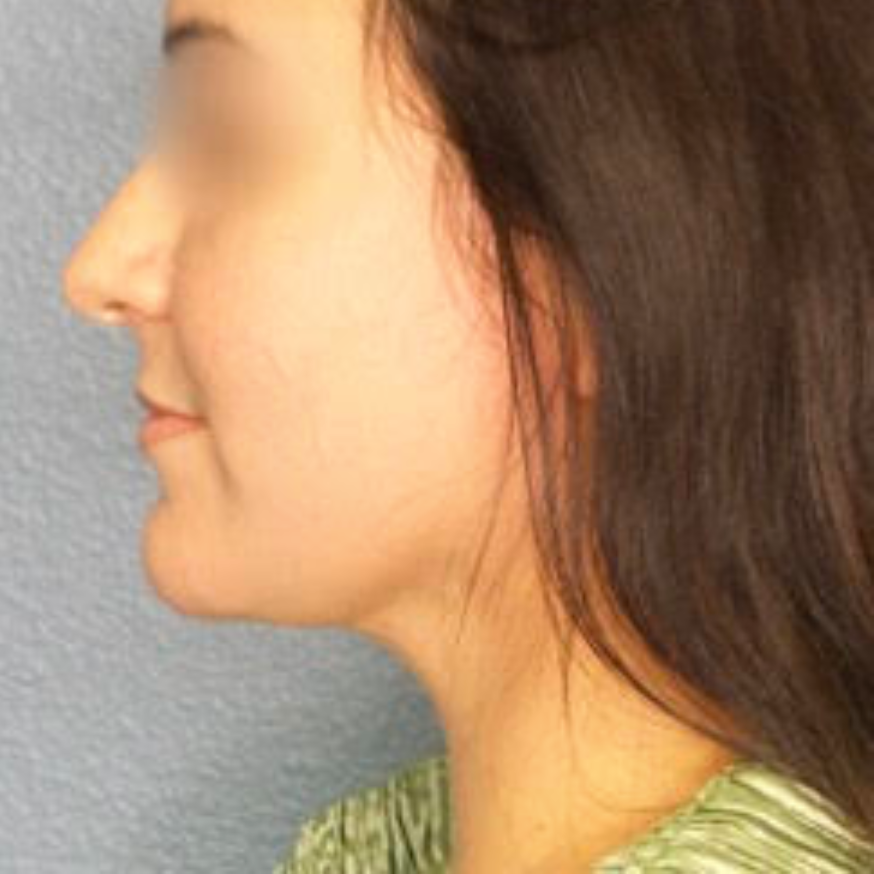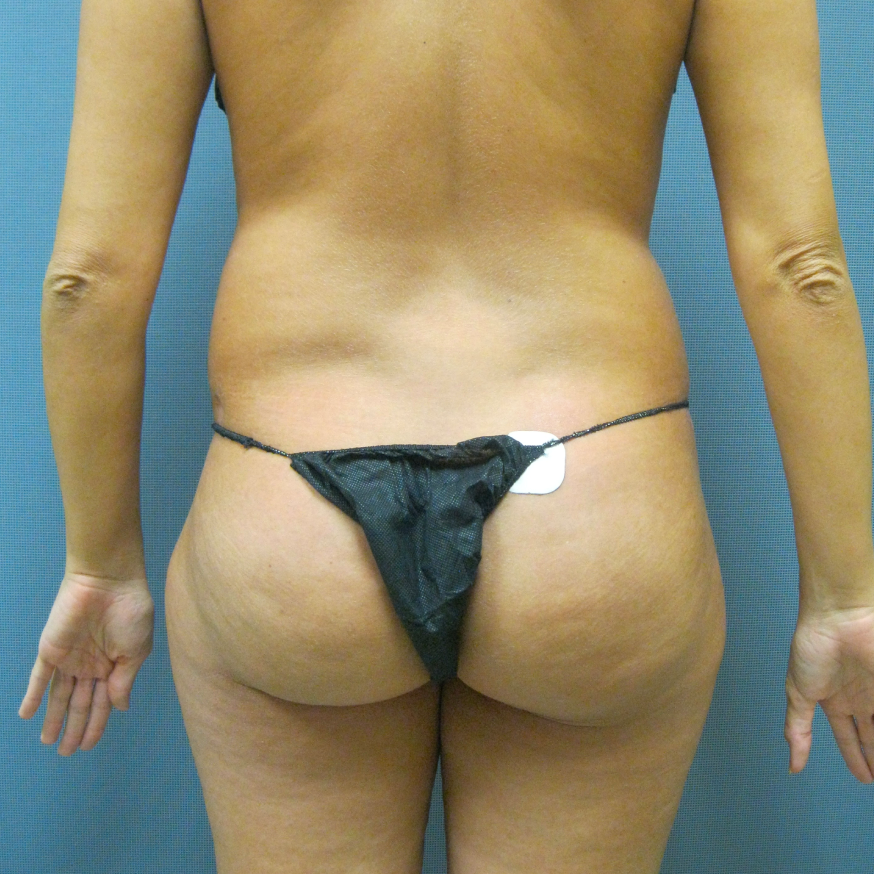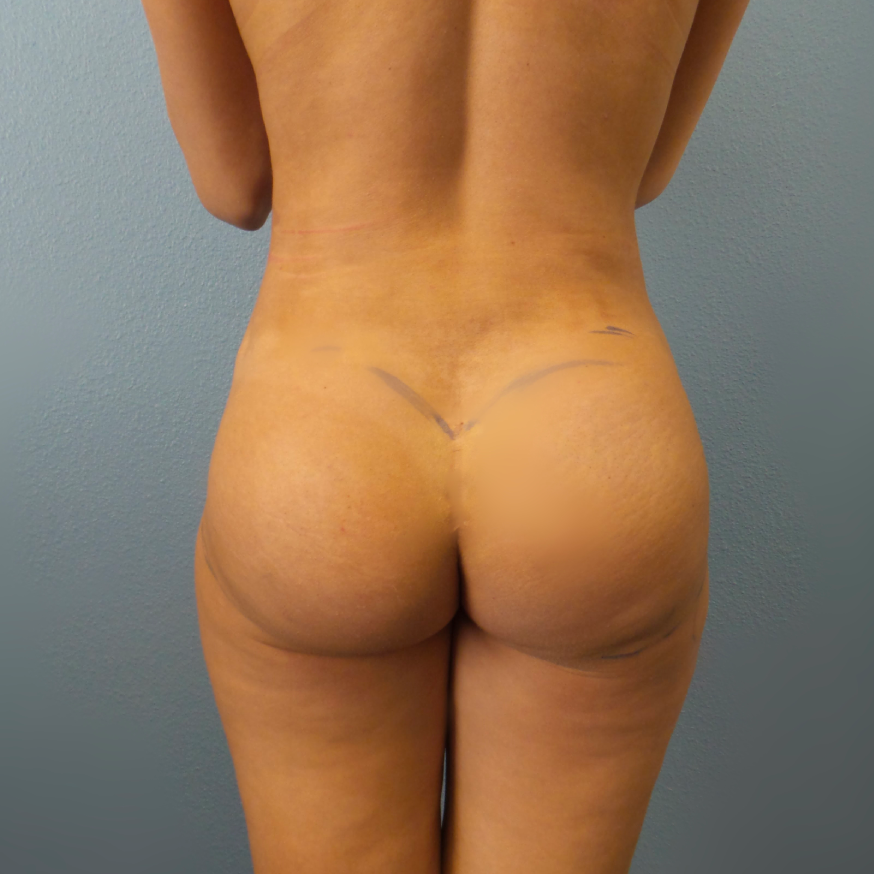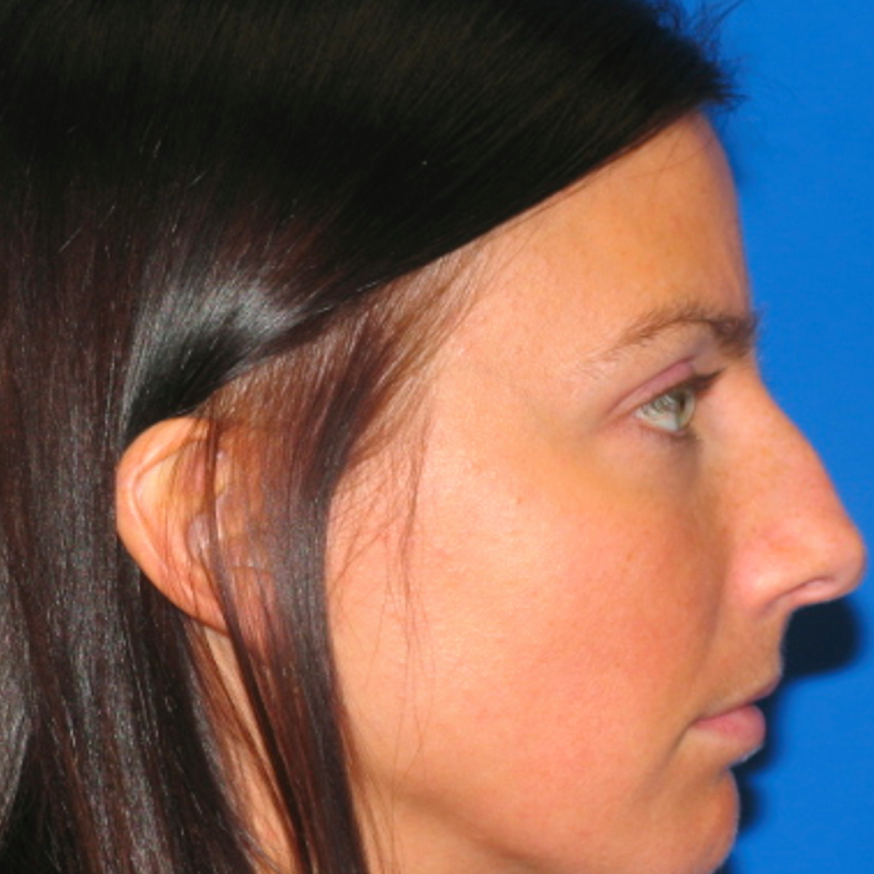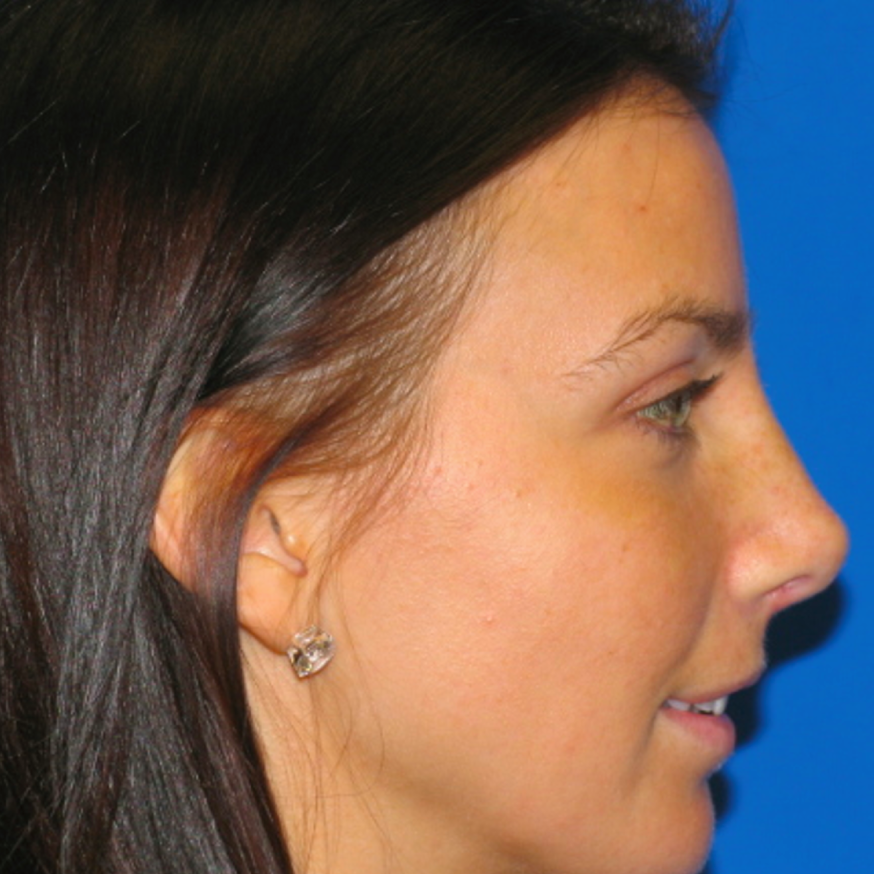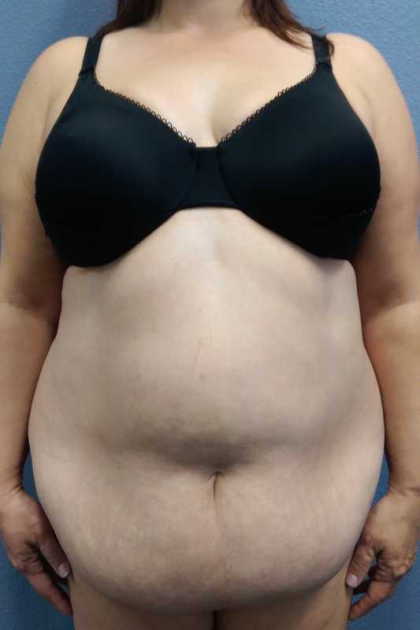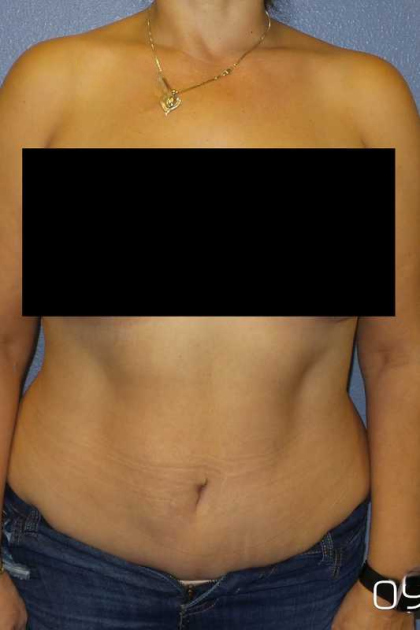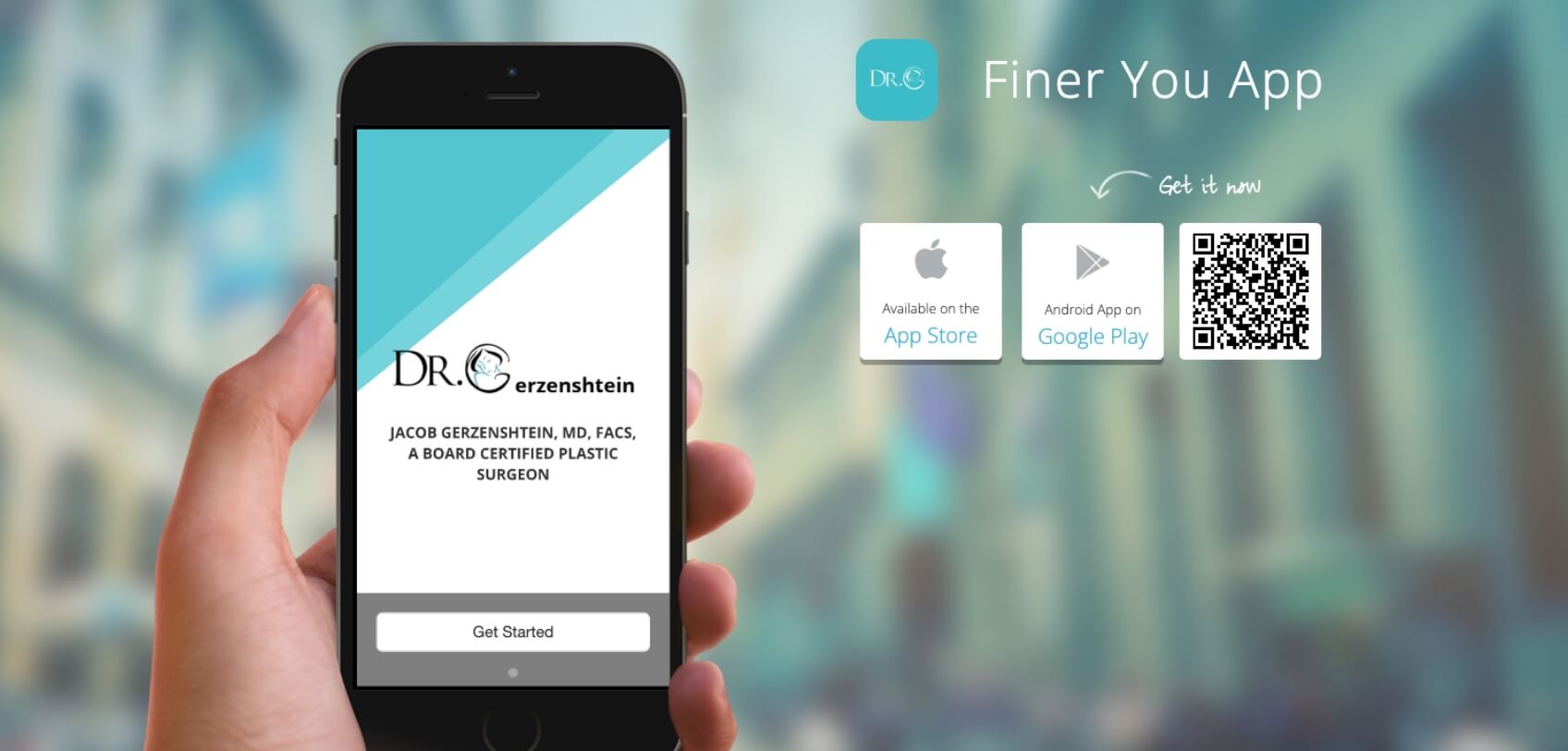Tummy Tuck
Conveniently located to serve the areas of Tampa and Lakeland, FL

If you’re looking for ways to improve the appearance of your waist and back, abdominoplasty and liposuction are two cosmetic surgery procedures that can help. Abdominoplasty, also known as a tummy tuck, removes excess skin and fat from the abdomen to give you a flatter, more toned appearance. Liposuction, on the other hand, removes stubborn pockets of fat from areas like your waist and back to sculpt your figure.
Contents
- 1 Before and After Photos
- 2 Procedure
- 3 Benefits
- 4 The Right Surgeon
- 5 Risks
- 6 Recovery and Results
- 7 Conclusion
- 8 Contact
- 9 FAQ
- 9.1 When should silicone gel-filled breast implants be used in breast augmentation surgery with caution?
- 9.2 Is seroma (fluid accumulation as your body attempts to fill a potential space) common after breast enlargement surgery, what are the consequences, and what is the treatment?
- 9.3 Can stretch marks be removed via abdominoplasty surgery?
- 9.4 Am I a good candidate for an abdominoplasty or tummy-tuck surgery?
- 9.5 What is a mini-abdominoplasty?
- 9.6 What happens if I become pregnant after an abdominoplasty?
- 9.7 What happens if I lose weight after a tummy-tuck?
- 9.8 How long do the results of a tummy-tuck last?
- 9.9 What happens if I gain weight after a tummy-tuck?
- 9.10 How long does tummy-tuck surgery last?
- 9.11 What is the customary cost of abdominoplasty surgery?
- 9.12 What can I expect in the post-operative period following tummy-tuck surgery, and what is recovery like?
- 9.13 Is abdominoplasty surgery ever covered by health insurance?
- 9.14 Is seroma formation common after tummy-tuck surgery?
- 9.15 What are the risks associated with abdominoplasty surgery?
- 9.16 How long do I have to be off from work or school after a tummy-tuck?
- 9.17 How much pain will I experience after abdominoplasty?
- 9.18 What is the usual post-operative recovery period like?
- 9.19 What kind of incisions may be used for the tummy-tuck procedure?
- 9.20 How is a tummy-tuck or abdominoplasty done?
- 9.21 What happens during a consultation for abdominoplasty?
- 9.22 I am in the process of losing weight, should I wait to have a tummy-tuck?
- 9.23 I plan to have a child, should I wait to have an abdominoplasty (tummy-tuck)?
- 9.24 What is a tummy-tuck?
- 9.25 Am I a good candidate for a tummy-tuck or an abdominoplasty?
- 9.26 What is an abdominoplasty?
Before and After Photos
Procedure
Understanding the Procedure
A tummy tuck, also known as abdominoplasty, is a cosmetic surgery that removes excess skin and fat from the abdomen. The procedure is popular among those who have lost a significant amount of weight, women who have had multiple pregnancies, or those who simply want to improve the appearance of their stomach area. At [Clinic Name], we offer safe and effective tummy tuck procedures to help you achieve the body you desire.
Am I a Good Candidate for a Tummy Tuck?
Before considering a tummy tuck, it’s important to understand if you’re a good candidate for the procedure. Generally, candidates should be in good health, have realistic expectations, and be at a stable weight. During your consultation at Finer You, our experienced surgeons will evaluate your health history and goals to determine if a belly tuck is right for you.
The Tummy Tuck Procedure
The tummy tuck procedure typically takes between two to three hours and is performed under general anesthesia. During the procedure, your surgeon will make a horizontal incision between your hips, just above your pubic area. The length of the incision will depend on the amount of skin and fat to be removed. Your surgeon will then separate the skin from the abdominal muscles, and tighten the muscles to create a smoother, flatter abdomen. Any excess skin and fat will be removed, and the remaining skin will be pulled tight and sutured together.
Before the Procedure
Before undergoing a tummy tuck surgery, you will have a consultation with your plastic surgeon to discuss your medical history, goals, and expectations. You will also need to undergo a physical examination and some tests to determine if you are a good candidate for the surgery. Your surgeon may advise you to quit smoking, avoid certain medications, and adjust your diet and exercise routine in preparation for the procedure. It is also important to arrange for someone to drive you home after the surgery and stay with you for the first few days of your recovery.
During the Procedure
Tummy tuck surgery is usually performed under general anesthesia and can take two to four hours, depending on the extent of the procedure. During the surgery, your surgeon will make incisions in your lower abdomen, remove excess skin and fat, and tighten your abdominal muscles. The incisions are usually made below the bikini line, so they can be hidden by underwear or swimsuits. Your surgeon may also use liposuction to further contour your abdomen area. Once the surgery is complete, you will be taken to a recovery area to be monitored until you are stable enough to go home.
After the Tummy Tuck Procedure
After the surgery, you will need to follow your surgeon’s recovery instructions. These may include taking pain medication, wearing a compression garment, avoiding certain activities, and keeping your incisions clean and dry. You will also need to attend follow-up appointments with your surgeon to monitor your healing and progress. The recovery period can vary depending on the extent of the surgery. Most people can return to work and normal activities within two to six weeks. It is important to follow a healthy diet and exercise routine to maintain the results of the surgery.
Benefits
Abdominoplasty and liposuction have several benefits. They can help you achieve a slimmer, more toned look, boost your confidence, and even improve your overall health. Excess fat in the waist and back can put strain on your spine and muscles, causing pain and discomfort. By removing this excess fat, you can alleviate these symptoms and improve your quality of life.
What is a Tummy Tuck?
A tummy tuck, also known as abdominoplasty, is a surgical procedure that aims to achieve a flatter and more toned abdomen. It involves the removal of excess skin and fat from the abdominal area, as well as the tightening of the underlying muscles. A tummy tuck can help individuals who have loose or sagging abdominal skin and weakened abdominal muscles, often caused by pregnancy, significant weight loss, or aging.
The Benefits of a Tummy Tuck
A tummy tuck offers several benefits for individuals seeking a flatter abdomen. It can improve the overall appearance of the abdominal area by creating a smoother and more contoured silhouette. The procedure can also address stretch marks and restore muscle tone, enhancing both the physical appearance and self-confidence of the patient. Abdominoplasty provides long-lasting results when combined with a healthy lifestyle.
Tummy Tuck after Pregnancy
A tummy tuck, also known as abdominoplasty, is a surgical procedure designed to address the physical changes caused by pregnancy. It targets loose skin, tightens abdominal muscles, and removes excess fat, resulting in a flatter and more toned abdomen.
The Procedure and Recovery
During a tummy tuck procedure, an incision is made along the lower abdomen. Excess skin and fat are carefully removed, and the abdominal muscles are tightened and sutured into a more desirable position. After the surgery, patients can expect a recovery period that typically involves some discomfort, swelling, and bruising. Following the surgeon’s post-operative instructions, including wearing a compression garment and avoiding strenuous activities, is crucial for a smooth recovery.
The Right Surgeon
Selecting a qualified and experienced plastic surgeon is essential when considering a tummy tuck. Look for a board-certified surgeon who specializes in body contouring procedures and has a proven track record of successful outcomes. Schedule a consultation to discuss your goals, ask questions, and review before and after photos of previous patients. A skilled surgeon will provide personalized recommendations and ensure your safety throughout the procedure.
Risks
As with any surgical procedure, a tummy tuck carries certain risks and considerations. These may include infection, bleeding, scarring, changes in sensation, and the potential need for revision surgery. It is important to have a thorough discussion with your surgeon about the potential risks and complications associated with abdominoplasty. Understanding the procedure, managing expectations, and following post-operative care instructions will contribute to a successful outcome.
In conclusion, a tummy tuck can help individuals achieve a flatter and more toned abdomen by removing excess skin and fat while tightening the underlying muscles. By understanding the benefits, the recovery process, and choosing the right surgeon, you can make an informed decision about undergoing an abdominoplasty procedure. Contact us to schedule a consultation and take the first step towards regaining confidence and achieving a more contoured abdominal appearance.
Recovery and Results
After the tummy tuck procedure, you can expect some discomfort and swelling. You will need to wear a compression garment for several weeks to help minimize swelling and support your abdomen as it heals. Most patients are able to return to work within two weeks, and resume normal activities within four to six weeks. The results of your tummy tuck will be visible immediately, and will continue to improve over the next several months as swelling subsides and your incision heals.
Conclusion
Abdominoplasty and liposuction are effective procedures for sculpting your waist and back and achieving a slimmer, more toned appearance. If you’re interested in these procedures, consult with a qualified plastic surgeon to learn more about the benefits and potential risks. With proper care and attention, you can achieve the results you desire and feel confident in new chapter of your life.
Contact
If you’re considering a tummy tuck in Central Florida, it is crucial to consult with a reputable and experienced surgeon. It is then highly recommended to look for a surgeon who specializes in body contouring procedures, has a proven track record of successful surgeries, and provides personalized care throughout your journey.
In conclusion, a tummy tuck in Central Florida can be a life-changing procedure for individuals seeking to improve the appearance of their abdomen. Our expert surgeons are dedicated to providing exceptional results and guiding you through every step of the process. Contact us today to schedule a consultation and take the first step towards achieving a sculpted abdomen that boosts your confidence and enhances your overall well-being.
Contact UsFAQ
When should silicone gel-filled breast implants be used in breast augmentation surgery with caution?
Safety has not been conclusively demonstrated in cases of autoimmune diseases, such as lupus and scleroderma, a weakened immune system as in chemo patients, or HIV patients, disorders of healing, blood clotting, vascular disease, after radiation therapy to the chest, and incompletely treated psychiatric problems.
Is seroma (fluid accumulation as your body attempts to fill a potential space) common after breast enlargement surgery, what are the consequences, and what is the treatment?
In breast augmentation surgery, a space is created under the soft tissues of the chest wall. This is the space where the breast implant is placed. The size of the pocket and the size of the implant are seldom identical, and the discrepancy creates a potential space where fluid can collect. The dissection through the soft tissue to the breast implant pocket also makes a potential space for fluid to collect. Sometimes a long standing blood collection can leave a space after it is resorbed. Most seromae resolve with only a few drainage attempts, without an incision. In cases where post-breast augmentation seromae fail to resolve, lining of the fluid pocket needs to be excised because this is what makes the fluid.
Can stretch marks be removed via abdominoplasty surgery?
This issue is entirely dependent on the patient, and the location of the striae or stretch marks. If the stretch marks are entirely confined to the skin that will be resected, obviously all of the stretch marks will be gone. If there are stretch-marks present outside of the area to be excised, the stretchmarks will be stretched in the direction of their orientation. To be sure, stretching them in a direction perpendicular to their orientation will always make them worse. When stretch-marks are present in lose skin the adopt a raised appearance with color-variegation, and become very conspicuous. Stretching them along their long axis, however, generally camouflages them to a greater extent than they would be in an area of excess skin.
Am I a good candidate for an abdominoplasty or tummy-tuck surgery?
The ideal tummy-tuck patient is healthy, smoke-free, has attained a stable target weight, and if female, is through with planned pregnancies. He or she has excess abdominal skin in the abdominal area, and a minimal amount of excess adipose deposits.
What is a mini-abdominoplasty?
A mini-tummy-tuck is used in patients who have minimal upper abdominal skin excess, and a minimal to moderate amount of skin excess below the umbilicus or the belly button. It is called a “mini” abdominoplasty because dissection does not proceed above the belly button. The navel is not transposed, the horizontal extent of the incision is much less, and abdominal tightening is generally not included.
What happens if I become pregnant after an abdominoplasty?
Stretching the abdominal skin after an abdominoplasty will lead to tension on the tummy-tuck incision. Tension is placed on this incision can lead to a widened scar. The added belly volume can stretch the skin of the abdomen, negating the effects of tummy-tuck surgery. It is best to be through with all planned pregnancies prior to undergoing abdominoplasty.
What happens if I lose weight after a tummy-tuck?
Losing weight after abdominoplasty can negate some of the effects of this body sculpting surgery. Losing adipose tissue relaxes the skin envelope in which it is contained leading to excess skin. If the weight loss is modest, less than twenty pounds as a general rule, this effect is not very pronounced. Losing more weight can produce visible skin laxity. It is best to be at a stable target weight prior to undertaking any form of body reshaping. Otherwise the results will be compromised.
How long do the results of a tummy-tuck last?
The results of abdominoplasty surgery are less dependent on gravity, and more on maintenance of ideal weight, or in the very least the stable weight at which the abdominoplasty was performed. Gaining weight will not only add unwanted adipose tissue but also stretch out abdominal skin, in essence partially reversing the intent of the original surgery, not to mention the havoc weight gain can wreak on abdominoplasty incisions. Ideally, one tummy-tuck surgery should be all you need.
What happens if I gain weight after a tummy-tuck?
Gaining weight after abdominoplasty can present a real problem. Tension is placed on the previous incision that can lead to a widened scar. The added adipose tissue can stretch the skin of the abdomen, negating the effects of tummy-tuck surgery. It is best to be at a stable target weight prior to undertaking any form of body reshaping. Otherwise the results will be compromised.
How long does tummy-tuck surgery last?
Abdominoplasty can take from two to four hours. This depends on the amount of tissue to be removed, patient size, and the possible addition of liposuction or hernia repair. Panniculectomy performed after massive weight loss generally takes longer because of the amount of skin to be removed.
What is the customary cost of abdominoplasty surgery?
Prices range from as little as $3,500 to as high as $15,000. There are several factors that go into the price of breast enlargement surgery.Geographical area is probably the most likely factor to affect the price of breast enlargement surgery. Prices tend to run lower in regions where the population is less affluent on average, where cosmetic surgery is considered less necessary, but also where competition is more prevalent.Surgeon availability is another important factor in price setting. A surgeon whose schedule is entirely booked for months on end, will generally “skim the top,” in terms of patients who can afford higher prices. This does not mean there is no one out there who can do as good a job. It means that a particular surgeon knows he or she can get a certain amount of money for his or her abdominoplasty.Another important part of the ultimate cost that is passed on to the patient is whether or not the plastic surgeon owns the facility at which the breast enlargement surgery is carried out. Although part of the facility fee may then go to the owning surgeon, it may be set substantially lower than a facility fee that would be paid to a third party such as a hospital or operating center when carrying out the tummy-tuck surgery.A factor related to the facility fee is whether or not the surgeon prefers to use general anesthesia, or to employ the services of an anesthesiologist, or whether the plastic surgeon favors surgeon administered sedation with local blocks for carrying out abdominoplasty surgery. Obviously, the addition of an anesthesiologist or even a certified nurse anesthetist will add cost to a tummy-tuck. It is important to realize, however, that paying for an anesthesiologist does add a certain measure of safety, regardless of what anyone may tell you to the contrary.
What can I expect in the post-operative period following tummy-tuck surgery, and what is recovery like?
The following information is given to Dr. Gerzenshtein’s patients before surgery to inform them of a typical course after abdominoplasty. Your plastic surgeon may have a different working environment and his or her patients a different experience. Consult with your physician about their impressions of patient experience. On waking from anesthesia, you will find yourself in the recovery room with dressings and/or abdominal binder in place. You will likely be able to depart once sufficiently recovered from anesthesia. A friend or family member should drive you home and stay with you for the next 2 days to help you with activities of daily living. You will need to sleep on your back with your hips flexed and a pillow or two under your knees. This will reduce the tension on your healing incision. When walking you will likely need to remain slightly bent at the trunk because of the same tension. You will feel tired and run down for the first several days after general anesthesia, this will improve substantially over the first week. Discharge should be minimal over the next 48 hours; bleeding may occur with excessive activity. If dilute local solution was used (superwet or tumescent technique) pain and discomfort will be mild initially, it will increase and peak within two days, it will then subside over the course of one to two weeks, please use pain medication as needed to help. Nausea and vomiting in the postoperative period is not uncommon and has to do with the type of anesthesia used, and overall patient sensitivity to the various medications, it generally resolves within one to two days after surgery, increasing fluid intake, especially via one of the “ade” (gatorade, powerade, etc.) solutions available for sports use, combined with anti-emetic medication should minimize this problem. Use of opiate pain medication, combined with inactivity, and dehydration may lead to constipation, increasing fluid intake will help this as well, especially in combination with walking, and the use of the prescribed stool softener. Swelling and bruising peak within three days of surgery and gradually subside over the following week. Healing incisions will adopt a pinkish hue which should gradually fade over the next six months to a year. Some patients react to absorbable (inside) suture, small pustules or whiteheads along the incision may signal this, the suture may be removed in the office if the problem becomes bothersome. Numbness may affect lower abdominal skin, this typically resolves on its own within six months.
Is abdominoplasty surgery ever covered by health insurance?
There are several instances in which excision of abdominal skin is covered. Certainly there is no coverage for purely cosmetic tummy-tuck surgery. Patients who have undergone massive weight-loss and are troubled by constant recurrent skin infections and irritation under the abdominal skin flap that results (called pannus), may be covered. The concomitant presence of hernia and or abdominal wall weakness may be covered as well.
Is seroma formation common after tummy-tuck surgery?
Although it is the most common complication of an abdominoplasty, seroma formation is more of a nuisance than a serious problem in the majority of cases. It may occur in as many as 15% of abdominoplasty patients. Seroma formation is a result of fluid accumulation as your body attempts to fill a potential space. Most seromae resolve with only a few drainage attempts, without an incision. In cases where post-abdominoplasty seromae fail to resolve, lining of the fluid pocket needs to be excised because this is what makes the fluid.
What are the risks associated with abdominoplasty surgery?
The most common complication of tummy-tuck surgery is seroma formation. This is a result of fluid accumulation as your body attempts to fill a potential space. Most seromae resolve with only a few drainage attempts, without an incision. In cases where post-abdominoplasty seromae fail to resolve, lining of the fluid pocket needs to be excised because this is what makes the fluid. Other complications include hemorrhage (bleeding), infection (superficial skin and soft tissue, or deep around the soft tissue surrounding the implant), incision dehiscence (wound coming open), loss of skin and fat due to compromised blood supply, and loss of sensation over abdominal skin (usually lower part). Major complications are much more common in patients who smoke, have poorly controlled diabetes, and have major systemic illness that interferes with healing. Apart from surgery related complications, problems related to anesthesia also need to be considered. Many times such troubles are more serious than any of the abdominoplasty related complications the most severe of which are blood clots travelling to the lung circulation (pulmonary embolism) or heart attacks (myocardial infarction). As with any patient undergoing a major surgery under general anesthesia, appropriate risk recognition and management is part of the standard pre-operative evaluation and plan.
How long do I have to be off from work or school after a tummy-tuck?
The answer to the question depends on several factors. If you work at a desk job, in a clean environment and you feel up to it you may be ready to resume work within 1-2 weeks of your abdominoplasty. If your job requires heavy lifting, over 20 lbs, on a regular basis, or a fair amount of physical exertion, you will not be able to return to work for 4-6 weeks. Regardless of what your normal daily activities may consist of, a lot will depend on how quickly you recover from anesthesia, and the stress of surgery.
How much pain will I experience after abdominoplasty?
Assuming the postoperative course is without complication; pain from tummy-tuck surgery peaks the day after surgery, and diminishes over the course of the following three to four days to be tolerable enough without the use of narcotics. Of course, pain tolerance varies significantly from patient to patient. The 72-96 hrs time frame is a “ballpark” figure, and a reflection of personal experience. Several other important factors are crucial to consider in breast enlargement surgery. Pre-incisional administration of local or dilute local (called tumescent) anesthetic greatly diminishes postoperative abdominoplasty pain. Sleeping with your back elevated and several pillows under your knees will reduce the tension on the abdominal incision and diminish your pain considerably. Apart from incisional pain, spasm of the tonic back muscles can cause a considerable amount of discomfort, muscle relaxants may be of benefit.
What is the usual post-operative recovery period like?
Your pain will be at its worst for the first three days after surgery and should diminish substantially after this. You should, however, get up and move about on the day after your surgery, attend to your basic needs, and cough and deep breathe as instructed. When sleeping or reclining, you should have two pillows under your knees, and your back slightly upright to reduce tension on the incision. When moving about you should be slight bent at the waist for the same reason. Presuming your drain output is minimal drains will be removed at the first post-operative visit. You should not engage in strenuous activity, heavy lifting, or straining the abdominal muscles. To maneuver out of bed you should roll sideways, for instance. You may shower 48 hours after the procedure. DO NOT bathe or submerge in water. Pat abdominal incision area dry, DO NOT rub. You should be able to get back to normal activities of daily living without much discomfort by 9-14 days. If your job does not involve much physical labor you may be fit to return within the same time frame. Heavier lifting and strenuous exercise should not be undertaken for at least one month after this surgery.
What kind of incisions may be used for the tummy-tuck procedure?
There are generally two configurations used by Dr. Gerzenshtein when performing an abdominoplasty; the straight cut and the V-cut. Both incisions are planned according to patient preference. A patient who prefers to wear a V-cut swimsuit will do better with an incision to match. The same holds true for a straight-cut bikini. Although a W incision has been advocated for various reasons, Dr. Gerzenshtein does not favor this approach owing to its appearance in and out of clothes, and would use it under special circumstances only. As a general rule, all incisions should ride low so as to be concealed. In cases where there is not enough skin present to reach the lower edge of the incision from above the umbilicus, it is far better to accept a small vertical component to the incision than to have an unsightly high-riding scar.
How is a tummy-tuck or abdominoplasty done?
Preoperative markings are made just before going back to the operating room. Based on patient preference, the final incision may be planned such that either a V-shaped or a more straight-cut bikini would adequately cover it. With the patient under general anesthesia, the skin and fat is raised away from the covering of the abdominal musculature to the level of the belly button or umbilicus is. A cut is made around the navel, and it is dissected from the surrounding skin and left on a stalk. The abdominal skin flap is the dissected superiorly to the level of the xiphoid bone, the lowest portion of the chest plate. The lower edge of the incision is pulled down and the excess skin and its underlying fat are removed. The edges of the rectus abdominis; the six pack muscle, may be tightened by sewing them together. The deeper layer separating the deep from superficial abdominal fat compartments is closed. Drains are placed under the skin/fat flap; following this the deep and then the superficial layers of the skin are closed. A new opening is made for the navel; the belly-button is then brought through this aperture and sutured in place. To reduce tension on the incision and keep it from spreading, the incisions are covered with Steri-strips™. A binder may be placed for support.
What happens during a consultation for abdominoplasty?
Dr. Gerzenshtein will take a detailed medical and surgical history, followed by a physical examination. This is done to make sure that you are physically and psychologically fit to undergo a tummy-tuck. In the course of the history and physical, once all of the pertinent general medical information has been obtained, Dr. Gerzenshtein’s focus will shift to your particular concerns, and make a determination as to what the best way would be to handle that particular problem. In general there are multiple considerations to ponder when it comes to abdominoplasty, such as the type of bikini you wear, how much lose skin there is below the belly button, above it, whether there is laxity to the abdominal muscles, and whether a tummy-tuck alone would solve the problem. All of this information will then be discussed in detail, and your preferences taken into account. All of the risks related to abdominoplasty will be laid out and discussed. All of your questions and concerns will be addressed. Following this, pre-operative photos may be obtained, followed by measurements.
I am in the process of losing weight, should I wait to have a tummy-tuck?
Having a tummy-tuck, then losing additional weight is counterproductive to the best possible result. This is because additional weightloss will create more loose skin, calling for another abdominoplasty.
I plan to have a child, should I wait to have an abdominoplasty (tummy-tuck)?
Pregnancy after an abdominoplasty will stretch the tummy-tuck scar, making it unsightly, or, worse, may split the point of incision altogether. Abdominal distension will re-stretch abdominal skin and make it necessary to repeat the surgery.
What is a tummy-tuck?
A tummy-tuck, otherwise known asabdominoplasty, is an operation that addresses three unfavorable characteristics of the aging, post-partum, orpost-weightlossabdomen; extra skin, lax abdominal musculature, and to a lesser degree remaining focal fat deposits. Extra skin is excised, to the extent that safe closure can be performed, abdominal muscles are tightened in the midline, re-establishingtaughtnessand bringing in the waistline, and leftover fat on the abdominal underside is removed.
Am I a good candidate for a tummy-tuck or an abdominoplasty?
There are three factors to consider, your overall health status, your post-operative goals, and your willingness to be pro-active in the recovery process. It is dangerous to perform any procedure on any patient unfit to undergo general anesthesia, but it is downright foolish to perform an elective cosmetic procedure on such a patient. Patients with heart disease, breathing difficulties, kidney insufficiency, and any other serious medical condition should obtain “clearance” before surgery to make sure they are not putting themselves at an unacceptable risk. Smoking patients should quit for at least a month before undergoing abdominoplasty. It goes without saying that psychological stability is a prerequisite. Women who are of child-bearing age should have had all of the off-spring they were going to have at the time of surgery. This is necessary for two reasons. First, pregnancy after an abdominoplasty will stretch the scar, making it unsightly. Second, pregnancy after a tummy-tuck may re-stretch abdominal skin making it necessary to repeat the surgery. For similar reasons, if you have been losing weight, you must be at your target weight, as any weight-loss will necessitate re-operation. Apart from doubling the cost of this particular surgery, it will expose you to the risk of general anesthesia for a second time, unnecessarily. In terms of postoperative expectations, a good candidate would be very clear about their desires and plainly state what they expect the tummy-tuck to achieve. If surgeon does not know what the goal is, how can he or she work toward it? It is unreasonable to expect this surgery to be a substitute for fat-loss or to complement a poorly completed weight-loss regimen. It is very reasonable to expect an excellent result if you are at target weight and have much excess skin and rectus abdominis muscles that are diastatic (split in the middle), with a bulge that is unrelated to subcutaneous fat. Finally, you must be prepared to work through some discomfort and resume normal activities of daily living early on to help prevent some of the more common surgical complications associated with any surgery.
What is an abdominoplasty?
An abdominoplasty, otherwise known as a tummy-tuck, is an operation that addresses three unfavorable characteristics of the aging, post-partum, or post-weight-loss abdomen; extra skin, lax abdominal musculature, and to a lesser degree remaining focal fat deposits. Extra skin is excised, to the extent that safe closure can be performed, abdominal muscles are tightened in the midline, re-establishing tautness and bringing in the waistline, and leftover fat on the abdominal underside is removed.

